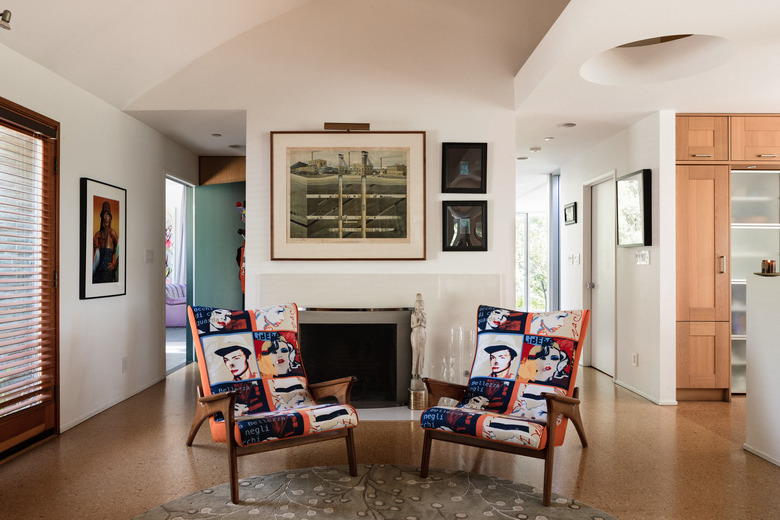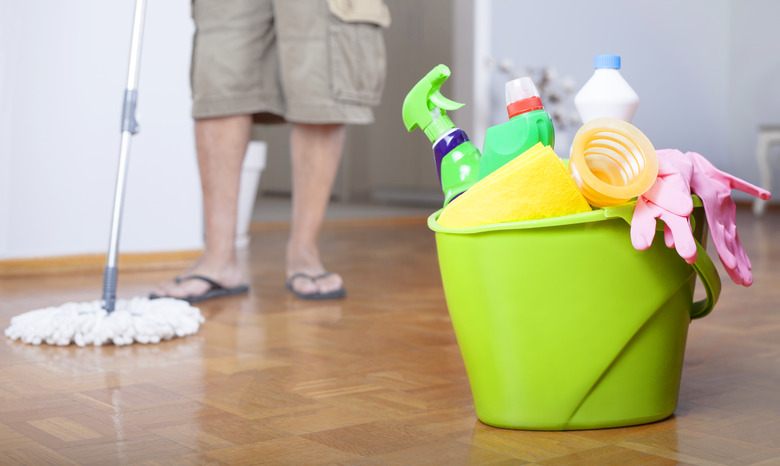How To Clean Cork Flooring
Cork flooring has been gaining popularity because it's beautiful and more eco-friendly than other types of flooring. Whether you have slats or tiles, cork is a favorite for families with young children because it's softer than traditional hardwood and great for controlling noise. Another useful feature is that cork tends to stay warm in the winter and cool during the summer.
If you want to keep your cork floors looking like new (and who doesn't?), it's easy to DIY. While cleaning this surface isn't incredibly difficult, however, a minor misstep in the cleaning process can cause permanent damage to your floors. It's also important to understand that the methods of cleaning sealed and unsealed cork flooring are different.
How to Clean Sealed Cork Flooring
Cork floors are often sealed with with polyurethane, so cleaning this surface is similar to cleaning regular hardwood floors. However, there are still a few things you need to keep in mind.
It's important to remove excess dirt and debris off the floor regularly — ideally, three to five days a week. Using a dry mop is the easiest way to do this, but if you prefer, you can use a vacuum cleaner. Just make sure the beater bar is off because it will scratch and damage the cork.
- Start by using a dry mop to gather and remove excess dirt. A microfiber mop or a push mop will get the job done.
- Wet the mop and wring out as much excess water as possible. Then, use it to clean off the floor.
- Be sure to wipe the floors dry when you're finished. This will prevent any potential water spotting or stains.
- Allow the floor to air dry.
For a deeper clean, especially for homes with kids and pets, use a pH neutral floor cleaner that's formulated for hardwood floors. But read the bottle carefully: Don't assume the product is pH neutral unless it is written on the label.
If you prefer to use entirely natural cleaning products, mix water and vinegar with a 10:1 ratio. However, if your floors are greasy from a food spill, or you have stubborn spots that require a bit of extra help, Cancork Flooring says you can add just one drop of dish soap and mop the floor with that solution. Rinsing with hot or warm water approximately two to three times will remove excess residue.
There are two things you should never use on cork flooring—oil soap or a steam cleaner. Oil soap will build up on the finish and make refinishing next to impossible, and the excess water from a steam cleaner can absorb into the flooring, causing swelling and staining.
How to Clean Unsealed Cork Flooring
Unsealed cork flooring can be more challenging to clean than sealed cork floors. This is because cork is porous, so it will absorb any moisture or cleaning product applied to it. When flooring lacks sealant, it becomes particularly susceptible to damage such as swelling and discoloration.
- Use a dry foam or rubber sponge to clean up larger areas of dirt, debris and dust.
- Alternatively, you can try vacuuming the floors. Just make sure the beater bar is up because otherwise, it will scratch and damage the floor.
- After removing the excess debris, if the floor is stained or soiled, take a soft cloth and dampen it with water. Then blot out the stains.
- Be sure to sop up excess water with a dry cloth.
If you have excessively dirty areas or stuck-on dirt, slightly dampen a microfiber mop and use it to clean those areas. You can also use dry mop to quickly clean up spills before they penetrate the unfinished cork.



